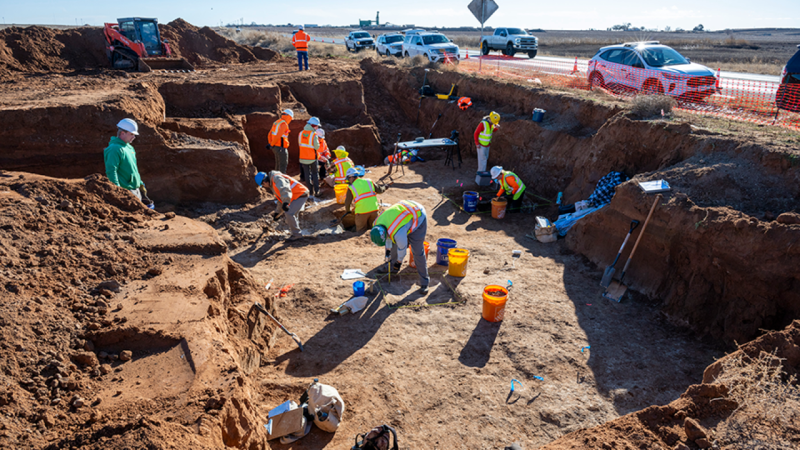
Road construction in Lubbock, Texas, has taken an unexpected turn, unearthing a trove of prehistoric megafauna bones. The Texas Department of Transportation (TxDOT) announced the exciting discovery, made during an environmental review for the proposed Loop 88 highway. Archaeologists uncovered the remains of large Ice Age mammals, with at least one giant ground sloth positively identified thanks to a distinctive tooth. While the discovery of megafauna bones isn’t unusual in the region, the sheer size and potential for further finds have generated significant excitement.
TxDOT project planner Chris Ringstaff described the finds as “big ol’ animals,” highlighting the unexpected delight of the discovery amidst a routine highway project. The bones were found in an area rich with playas, dried-out lakes dating back to the Ice Age, known to have been used as water sources by both animals and humans. This opens up the possibility of discovering evidence of human interaction with these colossal creatures.
The archaeological team is now meticulously searching for smaller artifacts and utilizing dating techniques to determine the age of the remains. The discovery holds the potential to be groundbreaking; should evidence of human activity alongside the Ice Age megafauna be uncovered, it would represent a first-of-its-kind discovery for a TxDOT project. If such evidence is found, work on the highway will be temporarily suspended to allow for further investigation.
This exciting find adds to the growing number of prehistoric discoveries in the United States. In recent years, significant finds have been made in other states, including a 13,000-year-old mastodon skull in Iowa and a complete mastodon jaw in a New York homeowner’s backyard. The Lubbock discovery, however, holds the unique potential to reveal unprecedented insights into the interaction between humans and Ice Age megafauna in Texas, making it a truly remarkable find for paleontologists and archaeologists alike.










